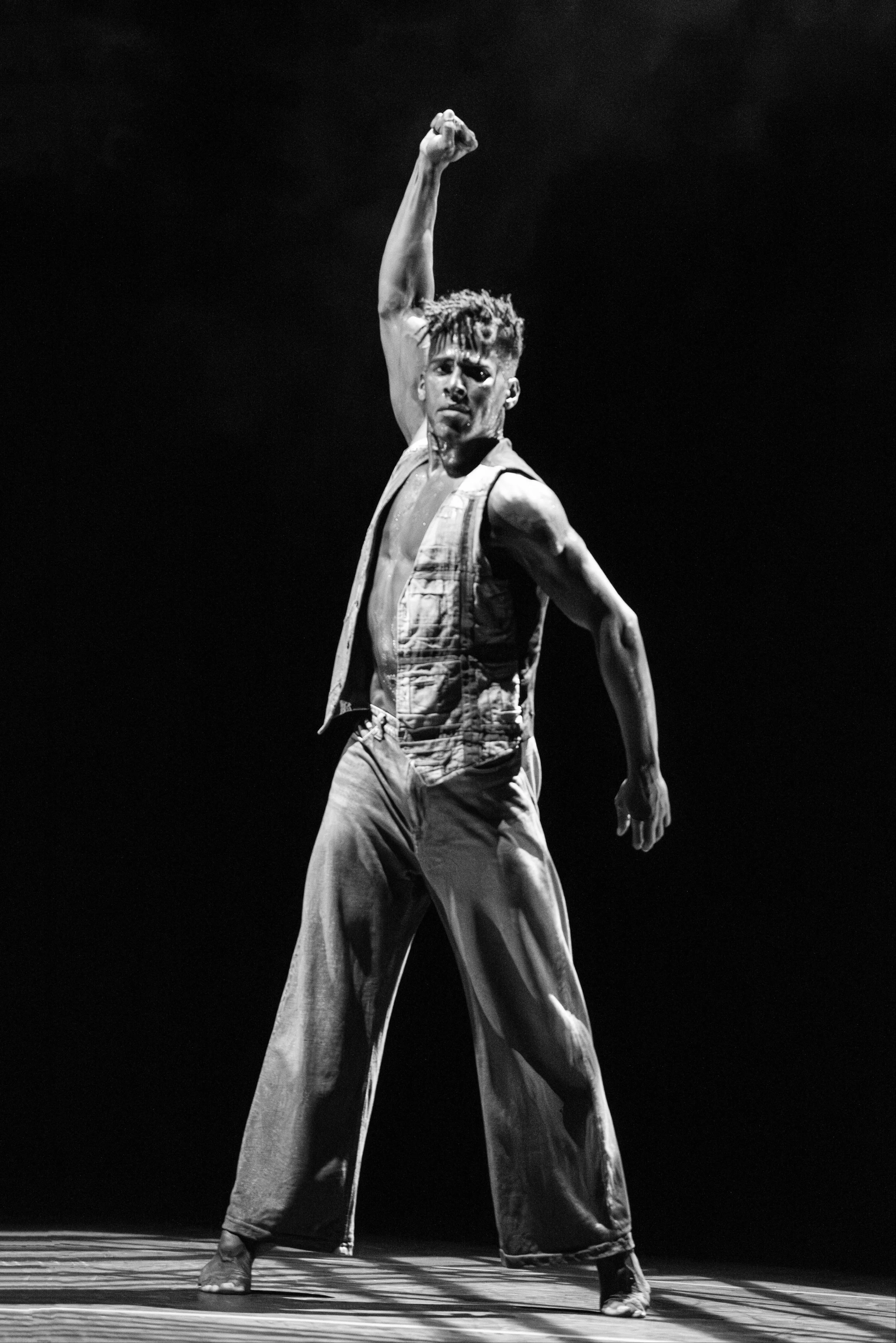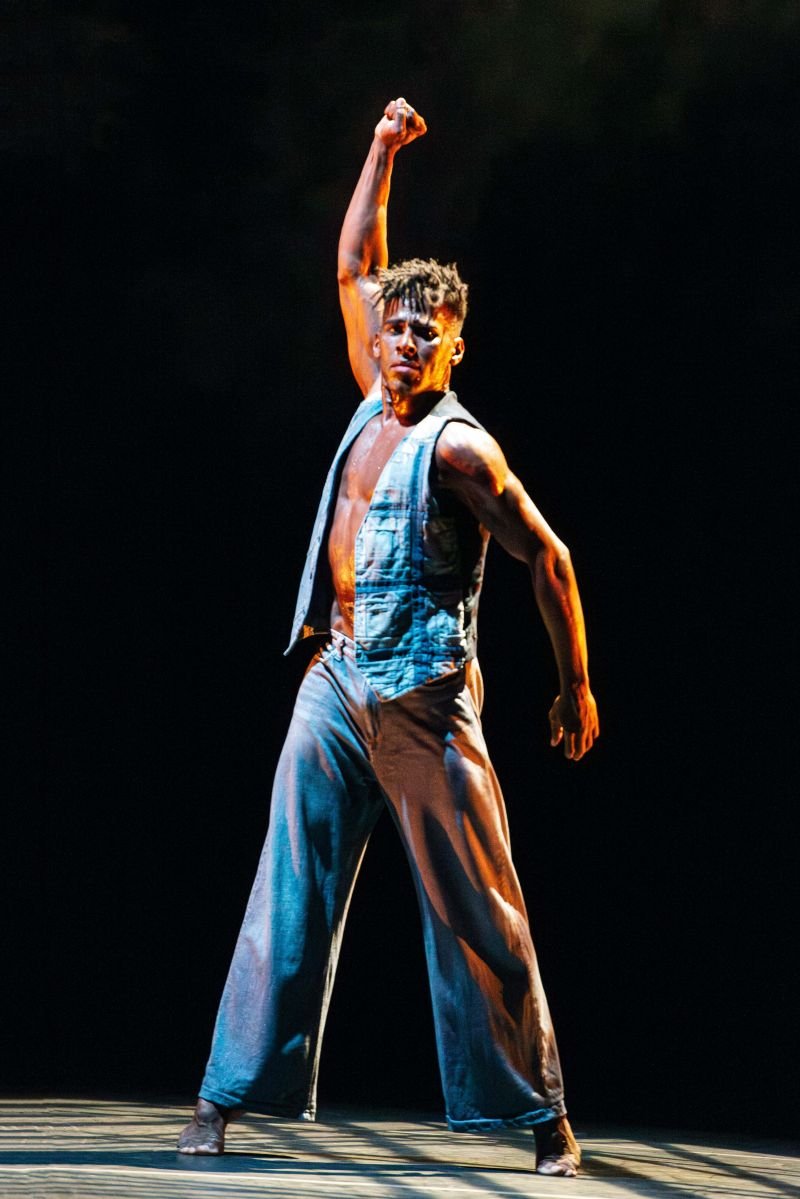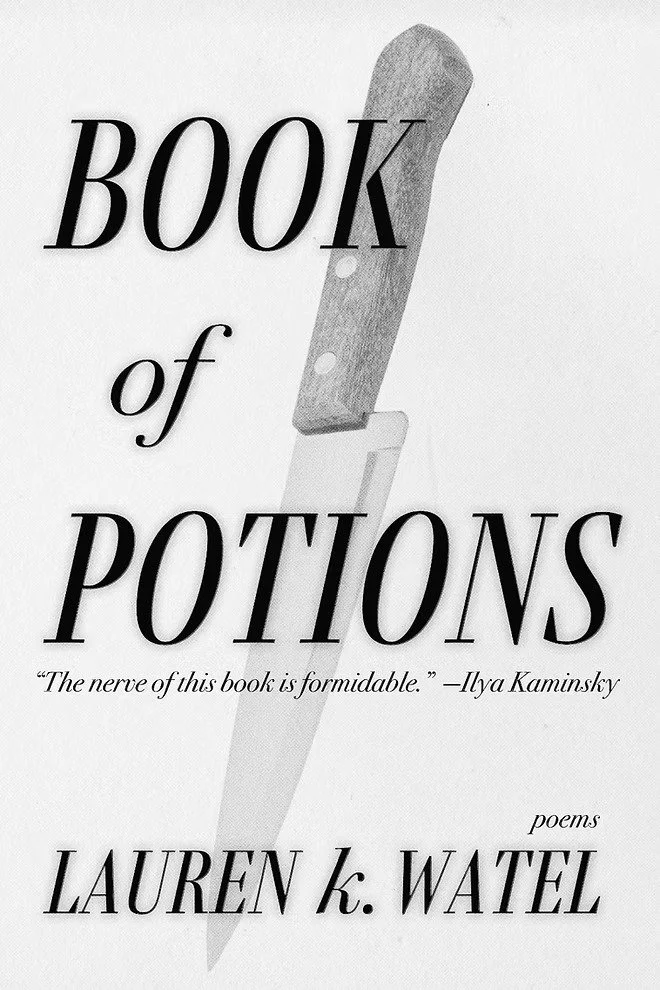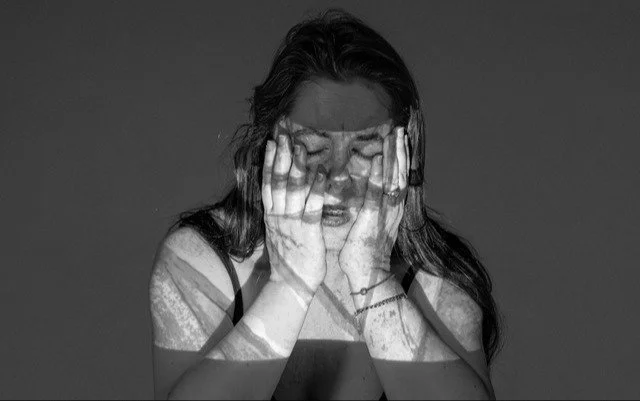LLOYD KNIGHT reflects on his 20 years with the MARTHA GRAHAM DANCE COMPANY
Photo by Hibbard Nash Photography
Lloyd Knight was born in England and reared in Miami. He has a BFA from the New World School of the Arts under Artistic Director Daniel Lewis.
Lloyd joined the Martha Graham Company in 2005, was promoted to soloist in 2009, and promoted to Principal in 2014. He has had ballets choreographed on him by Nacho Duato twice, Andonis Foniadakis, Larry Keigwin, Doug Varone, Lar Lubovitch, Klye Abraham, Liz Gerring, Michelle Dorrance, Anne Bogart, Pontus Linberg and Mats Ek.
Dance Magazine named Lloyd as one of the Top 25 Dancers to Watch in 2010. He partnered with New York City Ballet Principal Wendy Whelan in Ms. Graham's Moon Duet and also is partnering American Ballet Theatre's Misty Copeland in a Graham duet from Letter to the World. Most recently he was selected as Best Performer of 2015 by Dance Magazine.
(Bio courtesy Broadway Dance Center)
Interview by Catherine Tharin
This year marks your 20th year with the Martha Graham Dance Company. The Company is celebrating its 100th anniversary over three years as part of Graham100. Twenty years as a dancer is cause for celebration. Congratulations!
How does your approach to the work when you first joined the company compare with your approach now? What was required to deepen your physical development?
I’m secure now with my knowledge of the technique and the work it takes. When I was younger, when I just got in the company, I was trying to prove myself and did more than necessary which wasn’t necessarily the right direction. Now it's making sure that I research ahead of time, listen more and approach what I have to accomplish in a smarter way.
When did you begin learning the Graham technique or “movement language”?
I attended New World School of the Arts in Miami. At that time our dean was Daniel Lewis, a former dancer with the José Limón Dance Company (now The Limón Dance Company). It was required at New World that we learn both Graham and Limón. We alternated between the two. I heard about Graham while I was growing up, but it wasn't until I went to New World that Graham was pressed into my body and then honed almost every day.
It was a great learning experience, but it was really hard at first and I was confused. I didn't know why we were sitting on the floor for so long. I was just trying to learn how to move in general but once the puzzle pieces came together, I was like, “Okay, it makes more sense now.” It was still a challenge, but it felt so much more organic than other techniques.
The Graham technique is considered very difficult. How did you find your way?
My body is pretty tight, but you learn how to approach the body so that it makes sense. Some things are easier for me on the floor than for other people. Some things are harder. But it's the approach and learning the tricks to do it right. In Graham, we have great teachers who know how to correctly tell you the approach to good technique. You can get injured if you do things the wrong way or miss a step in your development. It's important to approach the technique in the smartest way possible.
Which Graham exercises on the floor are your favorites?
I would say the back leg extensions or the turn around the back. I love The Exercise on Six; it has become like my baby. The pretzel, that's love hate. It's something that I constantly need to do or else I lose it very fast. There are exercises you grow into, or you pick up and love right away.
Graham notably had a long torso and shorter legs. Her technique was built on her body. You have a different physique. How do you handle this?
You have to fit yourself into that body, in a way. You have to follow the road map and work on it. When I'm in company class or Graham class in general, I see the teacher working on something with another dancer. I see how people adjust to make it work. The feet coming forward exercise, for example, is a challenge for me and it always has been. Some days are easier than others but it's always a challenge. I have to know where my pelvis is set up, because my hips and lower back are tight.
When audience members come to see the Martha Graham Dance Company [Dances of the Mind program] April 1-13, what would you like them to look for?
The Graham classics are really exciting for me. Some of these works are not seen all the time, such Deaths and Entrances, a really big one that I hope people come and enjoy and Clytemnestra Act Two. I'm really pumped for that.
We also have great and fun contemporary works that we’re in the first year of performing - We the People by Jamar Roberts and Hofesh Shecter’s Cave and the new Cortege by Baye and Asa. The programs are filled with goodies.
Lloyd Knight in Jamar Roberts' We the People. Photo: Isabella Pagano
Lloyd Knight in Baye & Asa's Cortege 2023. Photo: Melissa Sherwood
You’re a great observer which is one of your strengths. You study how people teach. Are you also responsible for teaching, let's say, the additional men who dance Agnes de Mille’s Rodeo (scheduled on Program B) this season?
Depending on the dance itself, Janet (Eilber, the Artistic Director) might assign a dancer to a key person if there are questions. For Rodeo, for example, I'm a person that people can come to if they have questions.
Martha Graham was notably glamorous, and you are glamorous. This is not something that can be taught. Do you care to comment?
I always thought Graham was so glamorous; the way she lived her life. I do think that performing and being an artist has glamorous aspects, especially putting on makeup and costumes. It's fun to dress up. You spend your days in leotards. Sometimes I wear these crazy leotards or unitards and people are like, “whoa,” and I'm like, “Yeah I have to make myself feel good.” When we're outside of the studio it's fun to take off the dance clothes and play dress up. It's a lot of fun to explore in that way because it doesn't happen very often. There's not always a gala for me to go to.
What do you do on days you have off?
My friends and I are always working so I make sure that I have a personal life with family and friends outside of the stage. I try to do the things that bring me joy. It might be visiting a museum, or yesterday, for instance, was a day off and I took a Gyrotonic class because that helps my body plus it's a meditation, in a way. Then, I met friends who are dancers. It’s hard to find the time because we’re on different schedules. I hadn’t seen them in so long. You get to talk shop because they’re dancers with other companies. You explore and learn about the different sides of the dance community.
You've danced with many different companies as a guest artist. In addition, independent choreographers who practice different techniques and methods set works on the Graham company. How are you able to shift so fluently from one type of dance to another? Could you discuss the challenges?
It definitely can be hard depending on the mixture that day. If, for example, we're working on a new piece in the morning, and then in the afternoon we work on a Graham piece, it can be really challenging to flip the switch, especially on the body. Psychologically you may be ready but sometimes the body can be thrown off. It's taking the time to zone in on what you have coming up because it can be a big shift. That's just the way it is. When it comes to performance where we are shifting from genre to genre in one night - we might start with a classic Graham piece, then a new piece and maybe a Graham solo - you have to take the time to think about what you have to do next because it can be jarring to the body.
Especially considering that you have 20 years of Graham muscle memory. You can work with it, but you also have to shed your Graham expertise to some extent, too, I imagine.
It's just letting go, but it's fun to let it go and start new, start fresh. That's why I really love working with other choreographers, just to see what else is out there and to learn different ways of using the body. For example, I've been learning these masterpieces by great Broadway choreographers. I'm learning The Manson Trio by Bob Fosse. I was shocked by how many details go into a two-minute trio. It's so short! It wasn't until going into the studio that I realized, like wow, the detail - this pinky leads to that head turning and then the foot moves, and it’s amazing! I love that. It really makes me hungry to jump into more. Graham, though, is my first love, but it's nice to learn something new.
I imagine that if you weren't so accomplished in Graham as a foundation, it would be difficult to learn a Fosse dance that requires mental and physical agility.
It’s still a challenge! This year we're (the Martha Graham Dance Company) performing (Graham’s iconic) Death and Entrances and I’m in a new role, the Dark Beloved. In the past I was one of the core guys and I thought that I knew the piece but now I understand what it is about. Learning this new role and the physicality behind it - I'm still amazed 20 years later. I'm still learning about the work and about the movement, and yeah, this ecology is really wild.
Lloyd Knight and Xin Ying rehearsing Martha Graham's Deaths and Entrances. Photo: Steven Pisano
Could you give us specifics about the challenge of learning this role?
Just staying in character and growing into it is a challenge in itself. My character is a jerk in some ways. Having that knowledge and trying to put it in my body, I’m looking at the layers of this person. I discussed the character with Janet and the other coaches. At first, they shared that description, and I was like, “okay, I'm angry and I'm tough.” Then, I realized that, “yes, maybe that's a driving force but when I am with the Martha character, I can be soft.” There are different ways of making the character clear to the audience, and as a performer going on that adventure. Also, you can never turn off your character, even off stage. I'm off stage but I'm never off. I'm fully engaged by what's happening onstage, so when I reenter it's not that I have to restart because I'm still on the ride.
How did Graham approach the male roles? Was she able to fully realize the roles, given that the female roles were developed on her body?
She loved the female roles and wanted to showcase them, but the male roles were equally showcased. They meant a lot to her. She wanted to showcase all her characters. You never see a dance of hers and think, “that character in the back, they don't mean anything,” or everybody is a chess piece. They’re all important. Her men have different layers, and they're fully developed just like the female characters. I've heard comments about certain male roles, like “he’s just the dumb guy or you just lift the girl,” but it's not like that at all. You have to do the homework and read the notes and know the history of what is in front of you, so it reads more than just, “I'm here for the girl.”
Lloyd Knight and PeiJu Chien-Pott in Martha Graham's Night Journey. Photo: Brigid Pierce
Speaking about lifting the girl, you're considered a sensitive partner. How do you approach partnering?
With both men and women, I definitely listen to the person I'm working with. When I first entered the company, I would watch the partners and see how they worked together. I would watch the girls and could see when they were really happy because their partner listened to them. He was sensitive to her body because we are working with our bodies. It's always important to have that communication with who I'm working with. It's just taking the time and being sensitive to what each other needs.
In 1939, Erick Hawkins became the first male dancer in Graham’s company. Eventually they married. He was a classics major at Harvard and suggested the Greek myths as topics to explore. What further did he contribute?
I assume that she allowed him a lot of leeway. When I watch the roles, I think of tenderness mostly. From what I hear in interviews when he came along, she added a male aspect to the topics. She had clear ideas in her mind for what she wanted from a man in the dances. She wanted a male point of view.
Lloyd Knight and Marzia Memoli in Martha Graham's Cave of the Heart. Photo: Melissa Sherwood
You've spoken about being a Black dancer working for a white woman who is no longer alive. Your recent dance, The Drama, presented by Works & Process at the Guggenheim Museum, refers to your relationship to Graham in both abstract and obvious ways. Does this perspective have any bearing on the way you look at the work?
It's in my pride; it's in my body and it's what I am. I can't turn it off or on. Everybody has what makes them and this is mine. It's what makes us individual. It’s just who I am. I mean it always comes up though, I guess because it's obvious. Who we are, are who we are, and we bring who we are to wherever we are.
Lloyd Knight in The Drama. Photo: Melissa Sherwood
The Drama illuminates your own life as a dancer, but it also honors both Martha Graham and your mom, Yvonne Banton. Are there parallels between Martha Graham and Yvonne Banton?
Martha was dedicated to her art form, and she had faith. That was her life. With my mom it's the dedication to her family and to her faith. They are from very different worlds but they’re both determined women with strong beliefs and values. They push forward and stay positive.
When you speak of Graham’s faith, is it religious faith?
Graham was religious. It wasn't necessarily thrown in people's faces but going into her archives at The New York Public Library for the Performing Arts, I found a lot of rosaries and bibles that were worn out. Scriptures were written down on newspapers.
You've collaborated with Jack Ferver on your dances, The Drama, and an earlier work, Everything is Imaginable. Ferver is a dance-theater artist. What does Ferver bring out in you?
I was really impressed by Jack when I saw them first perform. They're wild with speaking and performing, speaking and moving. They were doing these really impressive dance movements while giving full monologues. I was like, “I want to try something like that.” Working with Jack - they really pushed me to get out of my comfort zone and ride different emotions. For instance, you can pull them in with jokes, but the underlying feeling is disturbing, which was a lot of fun to explore.
In The Drama you speak about your body being sore all the time. The way you expressed this was funny and accurate, if you believe the dancers in the audience who were shaking their heads in agreement. How do you deal with dancing through the pain?
Every day is different. When we recorded that scene you mention, I was very sore, and everything was fully activated but you know how to approach your body. There are creams and exercises and stretches and that's just the life that we have. That's what we signed up for and you do it because you love it. You wake up and you do some stretches, and you put the puzzle back together and you move on.
You mention in one interview how Peter London, who was a Graham company member, and a tall Black man, danced Graham. It sounds as if he taught you a lot just by watching him.
It was impressive to see him move, especially when I was a freshman in school, and I was learning the technique. He's so tall yet able to do all these things. But that's the attraction for everyone to Graham and the technique - these wild and intriguing combinations. It’s what makes you want to learn more about it. It's like, “if he can do it then there's no excuse why the smaller people can't do it.”
So, it was more about being tall than Black. You also speak about studying at Dance Theatre of Harlem when the legendary Arthur Mitchell was alive.
I did two summer programs, and during the first one Arthur was there. That was a really great experience because he would come into class, and he would give his two cents. Just to hear his thoughts and get corrections from him was great for everyone. Sometimes he would take over a class, sometimes he would just watch but I always loved to hear what he was going to say.
You mentioned that you loved seeing the Dance Theatre of Harlem dancers perform ballet choreographer George Balanchine's work. What was it about that experience that you enjoyed?
The attack and the speed with no frills or decoration. It's about the work. The black and white dances were especially clear, and I really appreciated it. You would get swept away. Arthur Mitchell taught his dancers to perform the work in the way that he performed the work. He danced for Mr. Balanchine, so the knowledge was coming straight from the horse’s mouth.
The Martha Graham Dance Company returns to The Joyce Theater in New York, celebrating its 99th anniversary with Dances of the Mind, featuring two programs that showcase electrifying psychodramas from the 1940s and '50s alongside powerful works from today's must-see choreographers. Click here for details.
Did you like what you read here? Please support our aim of providing diverse, independent, and in-depth coverage of arts, culture, and activism.
CATHERINE THARIN choreographs, curates, teaches, and writes. She danced in the Erick Hawkins Dance Company in the 1980s and '90s, was the Dance and Performance Curator at 92NY, NYC, for 15 years, and was a senior adjunct professor at Iona College, New Rochelle, NY, for 20 years. She writes dance reviews for The Dance Enthusiast and The Boston Globe, articles about dance for Side of Culture, and reports on dance for WAMC/Northeast Public Radio. She curated a 2024 dance season at Stissing Center, Pine Plains, NY. She continues to teach the Hawkins philosophy, technique, and repertory as an artist-in-residence. Her latest dance is a collaboration with jazz composer Joel Forrester and filmmaker Lora Robertson. Says Fjord Magazine of her work presented in November 2023: "gentle and precise movement contained to a small range, a good deal of floor work...cast a net of whimsical translucent sheen over it all. The evening was consistently charming, well-crafted and paced."












